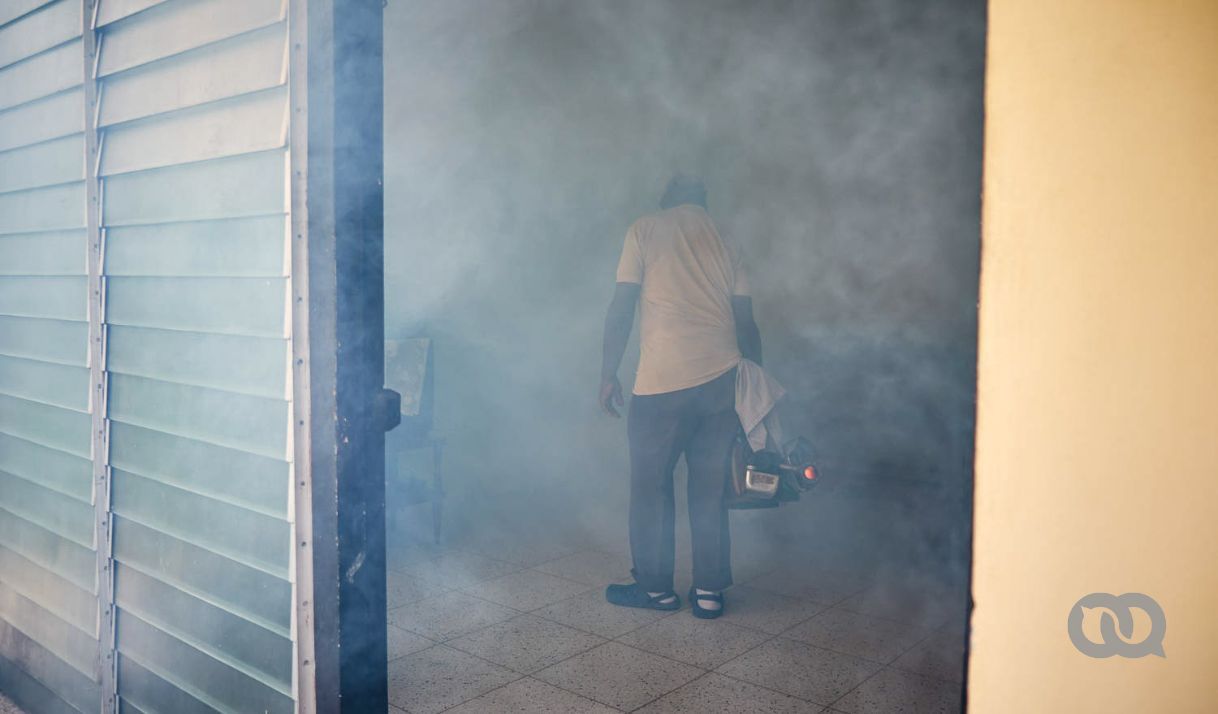My Days with Oropouche Fever

Photo: elTOQUE.
I went into the kitchen right after lunch to make coffee. At that moment, I noticed a slight dizziness combined with a chill, and I had to lean against the table because I suddenly felt weak. The expression on my face must have changed, because my partner, who had just entered the kitchen, felt my forehead and shoulders and said: “You have a fever.” I looked at him with a certain mockery and repeated something I say a lot: “I never get sick – I haven’t had a fever for over 20 years, and any bug never lasts me more than 24 hours. I don’t need a doctor; I’m made of iron.”
That’s not how it went this time. Oropouche fever had arrived, although I was unaware of it. I knew nothing about it, but it had chosen me as host. Even if you think you can just look away, the virus has no mercy. It won’t let you get by.
I ran for the thermometer then, to prove I was fine. The one we have measures the temperature in Fahrenheit, so that after using it I had to go online to see what the equivalent was in Celsius. Indeed, my temperature was over 38 [100.4⁰ F], but I was ready to wait for it to leave by itself, in the same sudden way it had arrived.
“I’ll go rest for a while,” I told myself, and despite the tremendous heat of a July noon in Cuba, I lay down and fell asleep.
I dreamed I had died in that same bed. I wasn’t afraid or even sad, only deeply worried. I knew that the person who would discover my lifeless body would see me through the window that gives out onto the side hallway of the house. From outside, they’d see that I wasn’t moving; that I didn’t respond to their calls. The lack of attention didn’t bother me, but it tormented me to think that they’d find me with my mouth hanging open. The mere idea of my jaw dangling and all my teeth showing, caused me infinite shame. I remembered a children’s movie in which the skeleton of a dead queen was able to remove and replace her lower jaw. It’s a disturbing image that’s accompanied me all my life, and in the dream, I was horrified to realize it could be repeated with my own body.
Between fever dreams, I tried to turn onto one side, in order to prop my face against my arm and keep my mouth from opening. It was a task I repeated during that nap, without knowing if I was asleep, awake, or if, in truth, I had died without waking. I think this process went on for about two hours and only ended when I opened my eyes. I put in the thermometer, still half under the influence of my dream, and learned that my temperature hadn’t dropped – on the contrary, now it was over 103 degrees. Without knowing exactly how much that was, I knew it was high.
When I tried to get up to take an analgesic, I discovered how hard it was to move. It was hard to understand how I had gone from a very active morning to a state where I could barely lift my head from the bed, and where changing position seemed so laborious and made every part of me hurt.
I felt like my body didn’t belong to me; that all strength had left me; that I was entering into a solitary tunnel with no return.
According to the internet, the Oropouche virus was discovered in 1955, near the river in Trinidad and Tobago that it was named after. It later spread to Brazil, to the point where it was classified as a disease of the Amazon. But since 2020 right up until now, its presence has been reported in many Latin American countries, including Bolivia, Argentina, Peru, Colombia, and now Cuba.
I don’t know if there’s any explanation why a disease, that was more or less confined to one region has spread so rapidly to others. Summer and mosquitos have been around since well before 1955, but up until this year no cases of this virus had been reported on the island. I don’t know much about the propagation of epidemics or such topics, but I do know that no more than three months elapsed between the time I heard about the virus the first time and the moment it got me.
In the Havana neighborhood where I live, we’ve all been sick – and when I say “all,” I’m not exaggerating, I mean everyone. It’s a nearly rural sector of a zone somewhat removed from the city, where there’s a lot of rain and, consequently, a lot of mosquitos. Since these insects are the carriers of this malaise, it’s not surprising that it’s spread here so quickly and deeply.
During the month of July in this area, the news of someone laid low by the virus became ever more frequent. People shared their experiences: some medicines that worked, some home remedies. It was clear to everyone that it was strictly necessary to maintain absolute bedrest. Oropouche takes away all your energy and, what’s more, is known to return after it seems to be over.
That’s what happened to me. After a week of physical discomforts, just when I thought I was on the road to full recovery, the fever returned even more insistently than during the first round.
I had high fevers that the analgesics couldn’t lower more than a few tenths of a degree for nearly five more days.
My head, bones, muscles, eyeballs all ached – even my shadow hurt.
A skin rash took over, jumping from place to place on my body, and causing me tremendous itching. My skin turned hot and pink, as if those patches of skin wanted to secede from the rest of my body and begin a new life on their own.
I felt my heart racing and palpitations. These terrified me at first, until I realized that they were from the illness. I completely lost my appetite, and the little I ate caused me severe digestive problems, because my stomach wouldn’t tolerate food.
However, the hardest thing was the complete loss of energy, associated with a notable inflammation of the liver. I was aware of this organ; I could feel it. It hurt when I sat up or moved around in bed. I couldn’t lie on my right side, because of its painful presence.
I spent several weeks that way, barely able to get up. If at any time I tried to walk a little or sit up for a while, I then had to spend a lot more time in bed, as exhausted as if I had run three marathons on the same day.
After nearly a month in that condition, some people from the polyclinic came by, doing house-to-house visits on my block. They wanted to know how many people had been sick. They refused to believe that all of us, from children to the elderly, had gotten the virus with greater or lesser degrees of severity. They recommended not taking sodium naproxen [NSAID often sold as “Aleve”] or using teas made from guayaba leaves, then said they’d come back the next day to begin fumigating against the mosquitos. After that, they recommended bed rest and left.
The next day or the one after, they came to fumigate. It was done quickly, because there wasn’t much fuel. The ideal measure would have been to fumigate for several days in a row, but that’s just the ideal; in reality, the fumigators never returned.
In bed, like in that first day of strange dreams, many unhealthy thoughts came to me.
I thought that it was really convenient for this government to have the population all get sick during a month as hot as July.
I thought about the fact this government doesn’t have enough medicine to confront even a disease like the Oropouche virus with a good prognosis. Imagine what could happen with a worse one.
I thought that the government would rather have us sick, silent, without hunger or energy.
While I was thinking these things, the neighbors announced that the monthly allotment of rice hadn’t yet arrived at the ration shop, but in its place they were selling one bottle of vodka per family.
With that, I realized that – effectively – Cuba is no country for the sick. Cuba isn’t even a country.
When all of us had recovered from the virus, we went back to our normal work. In Cuba, if you don’t die, you must go on without looking back.
Actually, it’s better not to die in Cuba either. In the worst moments of my illness, I read a news item from Holguin, asking the relatives of those deceased to bring in the gas cylinders to cremate them, because the crematorium didn’t have the fuel to do it. I recalled having read in a novel that takes place in Calcutta that when there was no money for the complete cremation of the corpses, they were thrown into the river half burnt, where they would finish decomposing under the eyes of everyone.
Hopefully, we’ll never reach that extreme – Or could it be we already have?
This article was translated into English from the original in Spanish.










Comments
We moderate comments on this site. If you want to know more details, read our Privacy Policy
Your email address will not be published. Mandatory fields are marked with *